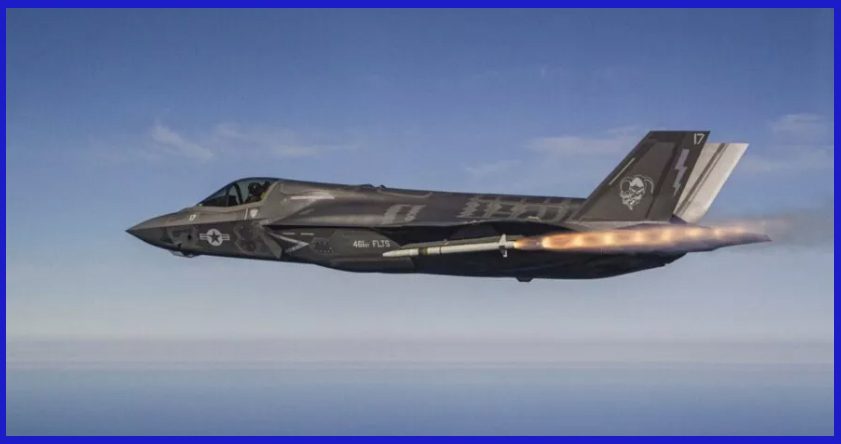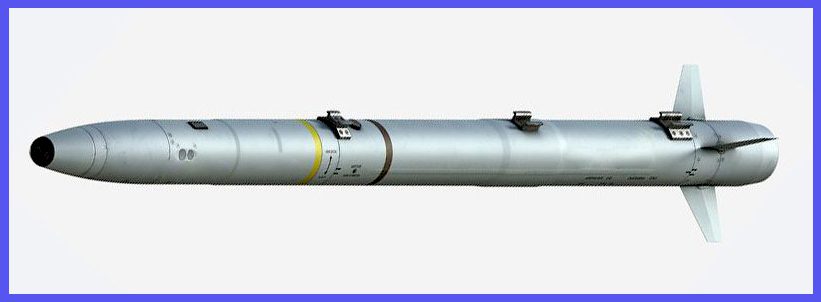The Short-Range Air-to-Air Missile (SRAAM) is a compact, guided munition designed primarily for engaging aerial targets at close ranges within visual range combat scenarios. Let’s Explore the Best Short-Range Air-to-Air Missile, which is a vital component of air defence systems, typically carried by fighter aircraft, offering quick reaction capability against agile and fast-moving threats.

SRAAMs are characterized by their lightweight design, high manoeuvrability, and sophisticated guidance systems. They are typically equipped with infrared or radar seekers, enabling them to track and intercept targets autonomously once launched. To engage opposing aircraft at ranges of less than 20 km, they are known as short-range or “within visual range” missiles (SRAAMs or WVRAAMs) and are sometimes referred to as “dogfight” missiles because they prioritize agility over range. These missiles are engineered for rapid lock-on and engagement, allowing pilots to neutralize enemy aircraft in close-quarters engagements effectively.

The compact size of SRAAMs enables multiple missiles to be carried on aircraft, maximizing the pilot’s firepower and combat effectiveness, while also minimizing drag compared to other weapons typically carried externally by aircraft. They are often employed in dogfights or during intercept missions, where agility and speed are crucial for mission success.
Modern SRAAMs feature advanced technologies such as thrust-vectoring control, datalink connectivity for enhanced situational awareness, and sophisticated counter-countermeasures to defeat enemy defensive tactics. Their effectiveness in close-range engagements makes them a cornerstone of air combat operations, ensuring air superiority and enhancing the survivability of friendly aircraft based on several tactical decisions in various combat environments.

The Inception of Air-to-Air Missiles
The inception of air-to-air missiles dates back to World War II, a period marked by rapid advancements in aviation technology. Before missiles, aerial combat primarily relied on guns mounted on aircraft for engaging enemy planes. However, the increasing speeds and manoeuvrability of aircraft rendered gun-based engagements less effective.
Confronting Allied air superiority during World War II, Germany directed significant resources towards missile research. In 1943, they repurposed the projectile from the unguided infantry barrage rocket system to create the air-launched BR 21 anti-aircraft rocket. This initiative eventually led to the deployment of the R4M unguided rocket and the advancement of several guided missile prototypes, including the German Luftwaffe’s Ruhrstahl X-4.

Following World War II, the Cold War era spurred significant advancements in missile technology, driven by the need for effective air defence and interception capabilities. The introduction of radar-guided and infrared-guided missiles revolutionized aerial warfare, offering pilots the ability to engage targets within and beyond visual range.

Notable milestones in the evolution of air-to-air missiles include the AIM-4 Falcon and the AIM-7 Sparrow developed by the United States, and the Kaliningrad K-5, Vympel K-13, and R-23 developed by the Soviet Union. These missiles introduced advanced guidance systems and improved performance characteristics, further enhancing the lethality and effectiveness of aerial combat in the 1960s era.

Since their inception, air-to-air missiles have undergone continuous refinement, incorporating advancements in propulsion, guidance, and warhead technology. Today, they remain a critical component of modern air warfare, providing fighter aircraft with the capability to engage and neutralize enemy threats at various ranges with high precision and lethality.

Guidance Systems of Air-to-Air Missiles
- Radar-guided (Active Radar Homing): Radar-guided missiles, such as the AIM-120 AMRAAM, use onboard radar to detect and track targets. They emit radar signals that bounce off the target aircraft, allowing the missile to continuously update its trajectory for interception. A significant advantage of an active radar homing system is its capability to operate in a “fire-and-forget” mode of attack. This allows the attacking aircraft to engage other targets or retreat from the area after launching the missile. Radar-guided missiles are effective against multiple targets and can engage beyond visual range (BVR).
- Active radar homing with data link: Certain contemporary missiles, like the Vympel R-37, integrate active radar homing with data link connectivity. This feature allows them to receive targeting updates from external sources such as airborne early warning and control (AEW&C) aircraft or other fighters. Such integration significantly enhances their capability to engage agile and evasive targets while concurrently maintaining situational awareness.
- Semi-active radar homing: Semi-active radar homing missiles, such as the AIM-7 Sparrow or Vympel R-27, rely on guidance signals from the launching aircraft’s radar system. The missile homes in on reflected radar signals from the target, allowing for mid-course corrections to ensure interception. Semi-active radar-homing missiles are effective at medium to long ranges.
- Infrared-guided (heat-seeking): Infrared-guided missiles, such as the AIM-9 Sidewinder or Vympel R-73, home in on the heat emitted by the target aircraft’s engines or airframe. These missiles are particularly effective in close-range engagements and are immune to radar countermeasures. They offer a “fire-and-forget” capability, as they do not require continuous guidance from the launching aircraft.
- Image-based guidance: Emerging technologies are exploring image-based guidance systems that use optical sensors or cameras to identify and track targets visually, such as the ASRAAM. The Israeli Python-5 incorporates an electro-optical seeker designed to scan a designated area for targets through optical imaging. Upon acquiring a target, the missile locks onto it for engagement. These seekers can be programmed to target critical areas of an aircraft, such as the cockpit.
Unlike systems dependent on the target aircraft’s heat signature, this seeker can effectively engage low-heat targets such as UAVs and cruise missiles. However, electro-optical sensors may face interference from clouds. These systems offer potential advantages in complex environments where traditional guidance systems may be limited by electronic countermeasures or cluttered radar conditions.

The Cutting Edge: The Latest Generation of Short-Range Fifth-Generation Air-to-Air Missiles
Python-5: The Python-5 is an advanced short-range air-to-air missile developed by Israeli company Rafael Advanced Defense Systems. It features a dual-band imaging infrared seeker, high off-boresight capability, and advanced counter-countermeasure capabilities, making it suitable for integration with fifth-generation fighter aircraft.

IRIS-T: The IRIS-T is a short-medium range AAM equipped with an imaging infrared seeker and thrust vector control. It offers high off-boresight capability and is compatible with modern fighter aircraft, including fifth-generation platforms.

ASRAAM: Produced by MBDA UK, The Advanced Short Range Air-to-Air Missile (ASRAAM) is a highly agile missile equipped with imaging infrared seeker technology. It offers advanced guidance and control features suitable for engagements in complex air combat environments, including those encountered by fifth-generation fighters.

AIM-9X Sidewinder: The AIM-9X Sidewinder is a highly manoeuvrable, infrared-guided AAM designed for close-range engagements. It features advanced thrust vectoring control and high off-boresight capability, making it compatible with the demanding requirements of fifth-generation fighter aircraft.

R-73 (AA-11 Archer): The R-73 is a highly manoeuvrable, infrared-guided short-range air-to-air missile developed by Russia. It is known for its high off-boresight capability, allowing it to engage targets outside the aircraft’s line of sight. While originally designed for fourth-generation fighters, it could potentially be integrated with fifth-generation platforms.

MICA IR: The MICA IR (Missile d’Interception et de Combat Aérien – Infrared) is a highly manoeuvrable, short-range air-to-air missile developed by MBDA France. It features an imaging infrared seeker and high off-boresight capability, allowing it to engage targets outside the aircraft’s line of sight. The MICA IR is currently in service with the French Air Force and Navy and is compatible with the Rafale fighter aircraft.

A-Darter: Developed by Denel Dynamics (South Africa) and Mectron (Brazil), the A-Darter missile features advanced infrared seeker technology and is designed to engage highly manoeuvrable targets at close range. It is equipped with a two-colour infrared seeker, which enhances its ability to discriminate between targets and decoys, thus increasing its lethality.

In conclusion, the landscape of short-range air-to-air missiles has seen remarkable advancements, driven by innovations in guidance systems, propulsion technology, and target acquisition capabilities.
While specific designations like “fifth-generation” may not universally apply to all short-range AAMs, the latest iterations embody the spirit of next-generation warfare, enhancing the lethality, agility, and versatility of fighter aircraft. Whether it’s the AIM-9X Sidewinder, the MICA IR, or the ASRAAM, these missiles represent the culmination of decades of research, development, and operational experience.
As air forces around the world continue to invest in advanced fighter platforms and integrated weapon systems, the importance of short-range air-to-air missiles in maintaining air superiority cannot be overstated. These missiles serve as a critical deterrent and a decisive tool in aerial engagements, ensuring the safety and effectiveness of fighter pilots in the complex and dynamic battlespace of the 21st century.


1 thought on “Explore the Best Short-Range Air-to-Air Missile”